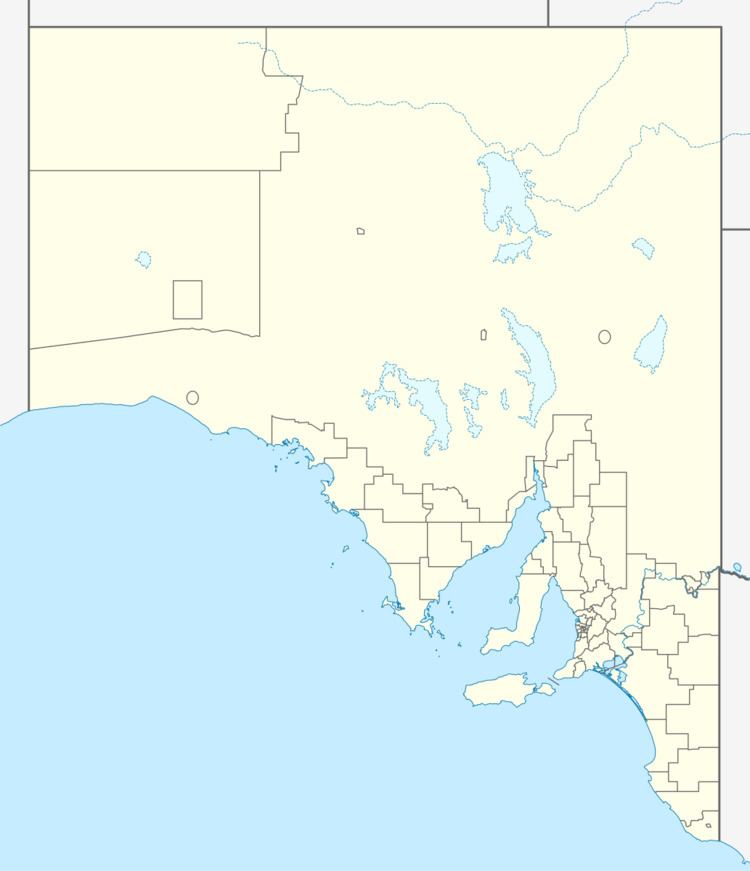 | ||
Wooltana Station most commonly known as Wooltana is a pastoral lease that operates as a sheep station in outback South Australia.
It is situated about 103 kilometres (64 mi) north east of Blinman and 259 kilometres (161 mi) north west of Broken Hill, on the plains between the northern end of the Flinders Ranges and Lake Frome.
The station contains the Paralana Hot Springs, which issue from rich veins of uranium ore. Carbon dioxide, nitrogen, radon and helium bubble forth continuously. Because the Paralana springs contain small amounts of uranium and radon, staying near the springs for a prolonged period constitutes a health hazard. Living on the floor of the springs is an extremophile algal mat that survives the warm temperatures of 62 °C and high radioactivity. The springs are listed on the South Australian Heritage Register as a designated place of geological significance.
Initially established by the pioneer John McTaggart who arrived in South Australia from Scotland in 1852. In 1856 McTaggart left the property near Mount Gambier where he was working and headed north with is brother in law John McCallum to search for suitable lands. Having found the plains of Wooltana he returned to Mount Gambier and drove his flock of 1,500 sheep along with his wife and four children via Port Augusta to Wooltana. At his the McTaggarts were the northern most European settlers in South Australia with the nearest being Arkaba Station some 200 miles (322 km) south. The area was struck by drought from 1863 to 1865 and John Taggart retired in 1882 leaving the property in the hands of his son, Lachlan Taggart. The property was enlarged in 1907 when Taggart acquired the neighbouring property, Paralana Station. Paralana occupied an area of 600 square miles (1,554 km2) and when absorbed into Woolatana the total area was brought to 1,000 square miles (2,590 km2).
A South Australian shearing record was set at Wooltana in 1912 with the shearer G. Denman shearing 274 sheep in 8 hours and 40 minutes. The record was broken in 1927 by a shearer from Arkaba Station completing 277.
The McTaggart family sold the property in 1918 to A.J. and P.A. McBride of Burra for £60,000. At the time the property comprised 1,070 square miles (2,771 km2) of leasehold and was stocked with 30,000 sheep as well as cattle, horses and camels.
In 1924 the area affected by drought and two flocks totalling 9,000 sheep were overlanded off the property to Hawker to be trucked further south. Over 30,000 sheep were shorn at Wooltana in 1928.
During the drought of 1948 over 10,000 sheep were sold off from Wooltana. Hundreds of sheep died from lack of feed in the area and the stations flock was reduced to half its size. Wild Dogs became problematic during the course of the drought feeding on weakened sheep, in 1950 Wooltana served as a base for the dropping of 90,000 wild dog baits, containing strychnine, to reduce the population of the pest.
The area was struck by drought in 1954 with rains finally falling in December, Wooltana received 3.02 inches (77 mm) over a two-day period.
The land occupying the extent of the Wooltana Station pastoral lease was gazetted as a locality by the Government of South Australia on 26 April 2013 under the name 'Wooltana '.
